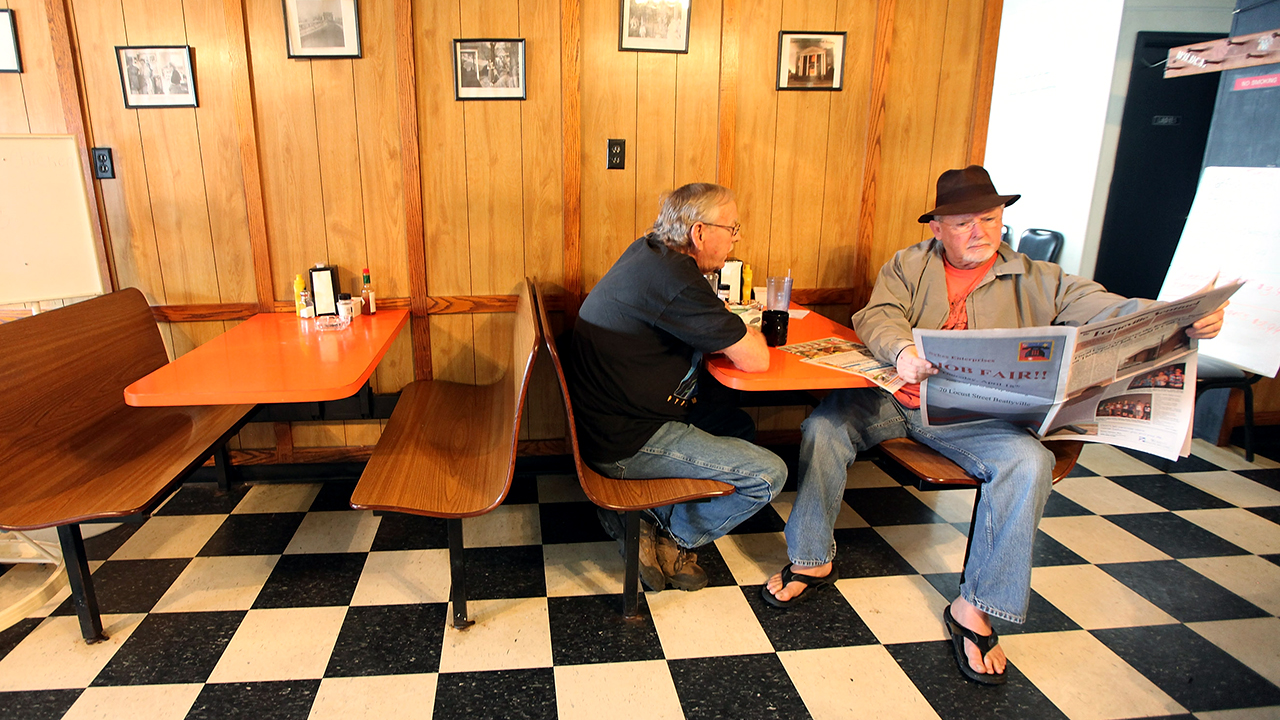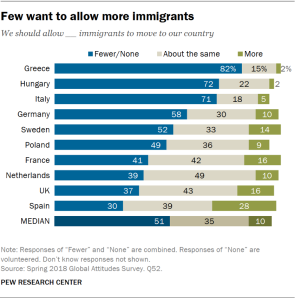
Americans in urban communities are more likely to say local news media mostly cover the area where they live, while rural residents say that their local news media mostly cover another area, such as a nearby city, according to a new Pew Research Center survey.
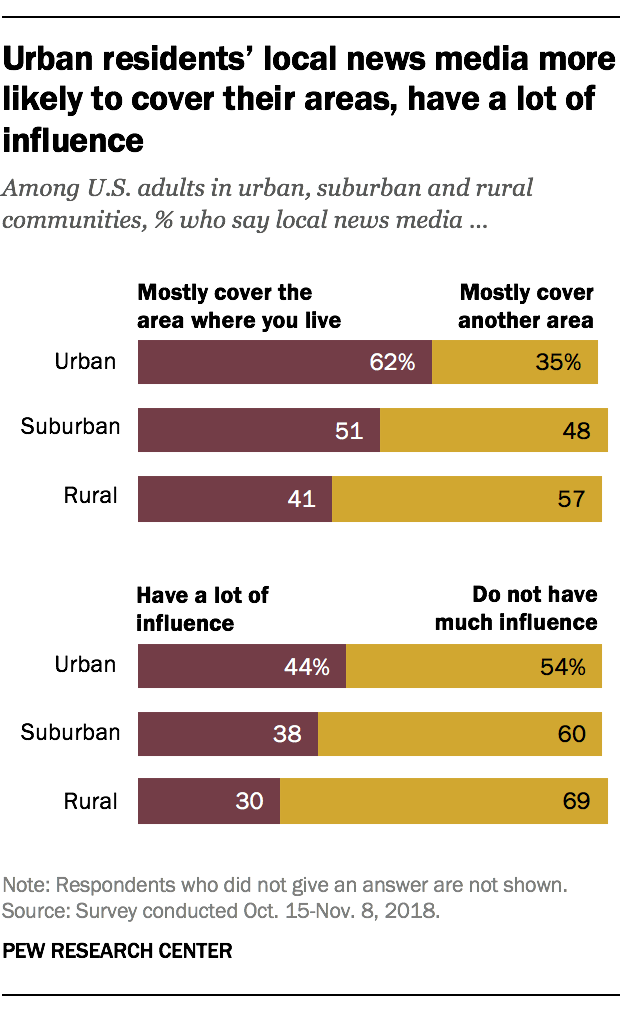
Roughly six-in-ten self-described urban residents (62%) say their local news media mainly cover the area they live in, while a majority of those who describe themselves as rural residents (57%) say the opposite is true – their local news media mostly cover some other area, a concern raised by many journalism watchers following newsroom cutbacks and media consolidation. Self-described suburbanites are more evenly split, according to the survey conducted Oct. 15-Nov. 8, 2018, among nearly 35,000 U.S. adults.
Urban residents are also more likely than those in rural and suburban areas to feel that their local news media have a lot of influence on their communities: 44% of urban residents say so, compared with 30% of those in rural areas and 38% in suburban areas.
Despite feeling that the local news media are less connected to their communities, rural residents express the same level of desire as urban and suburban residents for getting news from journalists who are personally engaged in their communities. Roughly equal shares of urban, suburban and rural residents –44%, 41% and 42%, respectively – say it is very important for journalists to be personally engaged in the local community they serve (an additional 37% of urban, 41% of suburban and 40% of rural residents say it is somewhat important). When asked how important local journalists’ understanding of local history is, 52% of urban, 46% of suburban and 47% of rural residents say it is very important (with an additional 33% urban, 38% suburban and 40% rural residents saying it is somewhat important).
For this analysis, references to urban, suburban and rural communities are based on respondents’ answers to the following question: “How would you describe the community where you currently live?”
There are other areas in which residents of these three community types differ in their views of local news coverage.
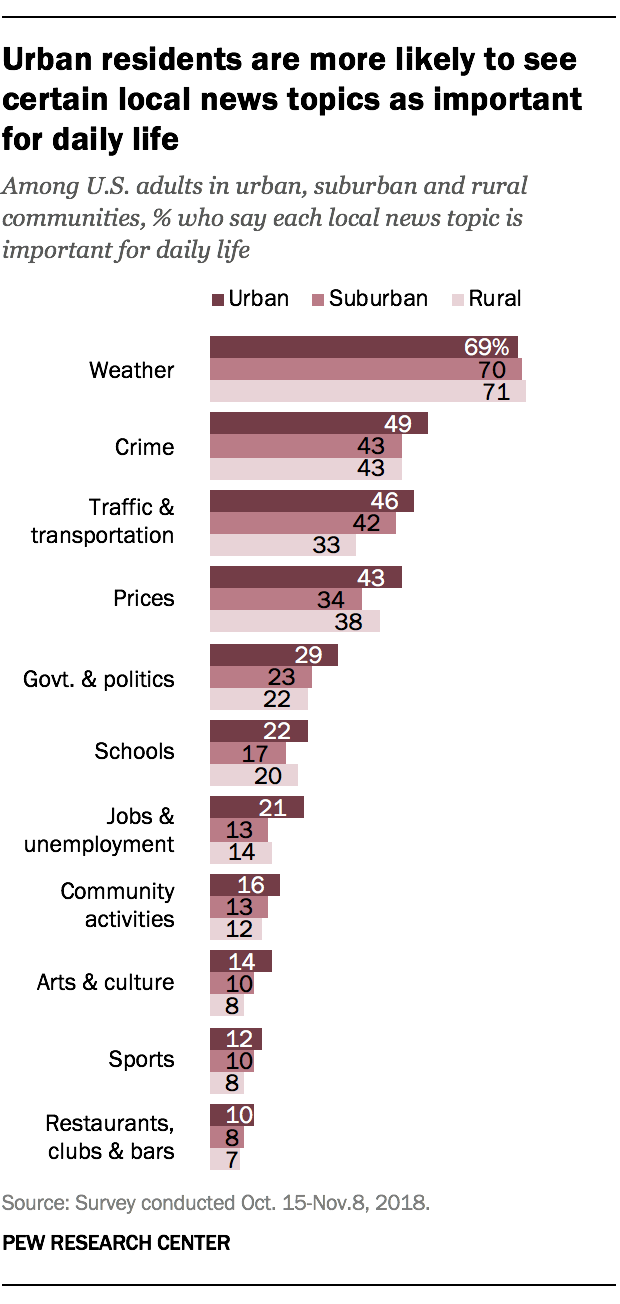
Urban residents are more likely than suburban and rural residents to see certain local news topics as important for daily life. For example, roughly half of adults in urban areas (49%) say crime is an important topic to follow for daily life – higher than those who live in suburban or rural areas (43% each). Urban residents are also more likely to say news about jobs and unemployment is important to follow for daily life (21%) than those in suburban (13%) or rural (14%) areas. The same pattern of difference exists for government and politics and prices.
All in all, Americans living in urban areas see a greater number of local news topics as vital to their daily lives than do suburban or rural residents. Three-in-ten urban residents say at least five of the 11 local news topics asked about are important for daily life, compared with 21% of adults in suburban and 20% in rural areas.
Residents in the three types of communities also differ on how important they think the internet is for getting local news. Urban residents are more digitally focused in their local news habits, placing greater emphasis on the internet for local news. About four-in-ten urban residents (37%) say the internet is their most important source of local news, compared with 32% in suburban areas and 26% of those in rural areas. They are also more likely than rural residents to often get news from websites and apps (29% for urban vs. 23% for rural, along with 27% of suburban residents).
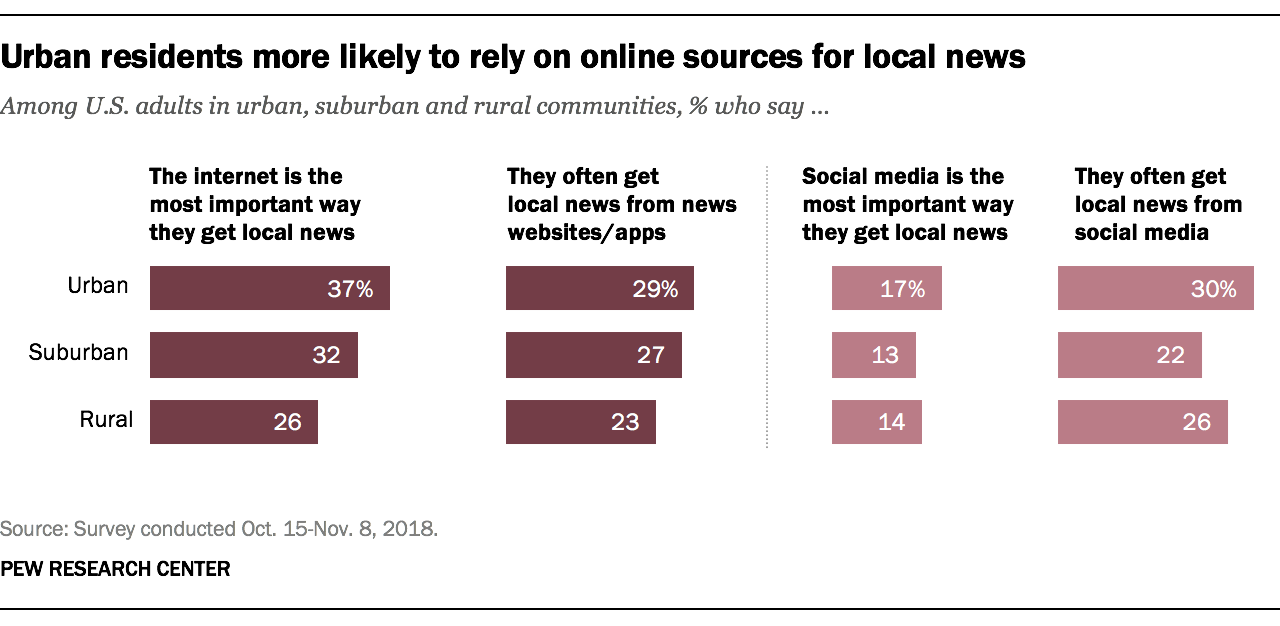
Previous research by the Center has shown that some differences in views of social and political issues can be attributed to differences in the partisan composition of urban, suburban and rural areas rather than in viewpoints rooted in a particular type of community. Still, when it comes to views of their local news media’s coverage of and influence on the community, news topics that are important to them, and their use of the internet to access local news, the significant gaps in attitudes between urban and rural residents persist even after taking into account party identification.
For example, among those living in urban areas, Republicans and Republican-leaning independents are as likely as Democrats and Democratic leaners to say the local news media cover the area where they live (61% and 65%, respectively). By comparison, about five-in-ten Republicans and Democrats in suburban areas and four-in-ten in rural areas say so.
For more, read the full report and see its methodology.
